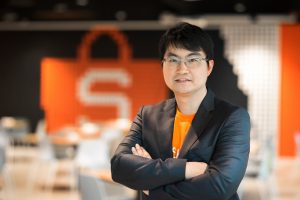Singapore may be called the “tiny red dot,” but it has the biggest online spenders in Southeast Asia, making it a lucrative market for e-commerce companies. According to market research firm Forrester, the average annual online retail expenditure per Singaporean buyer is USD 731, compared to Malaysia’s USD 191, which is the next highest regional average. Lazada and Shopee may dominate the e-commerce landscape in other Southeast Asian countries, but Qoo10 once had a tight grip on Singapore’s e-commerce crown—at least in terms of website traffic. Since the third quarter of 2017, it has consistently nabbed the top spot, but was dethroned by Lazada at the end of June 2019, according to online shopping aggregator website iPrice.
Close race expected for Singapore’s e-commerce marketplaces, according to web traffic
Analysts expect Lazada and Qoo100 to continue overtaking and trailing one another for the rest of the year. In Singapore, Lazada clocked a monthly average of 7.55 million desktop and mobile visitors in the second quarter of 2019, as compared to Qoo10’s 7.16 million, according to iPrice, which gets its data from SimilarWeb.
“Lazada has closed the gap to Qoo10 in terms of number of visits over the last year and we believe this will continue. Both websites will most likely have very similar visit figures during the second half of 2019,” Thibault Ricbourg, senior director at marketing and strategy consultancy Simon-Kucher & Partners told KrASIA in an email.
He attributed the lead achieved by Lazada to pricing, adding that Qoo10 has lost part of its price advantage versus Lazada and Shoppee. An example would be the price of a Doughnut Pastel Series backpack on these three platforms: SGD 89 on Qoo10 and Shopee, and SGD 99 on Lazada. Lazada has also managed to capitalize successfully on its 11.11 (Singles’ Day) and 12.12 sales, Ricbourg said.

Clare Lee, a research associate at market research firm Euromonitor International, said that Lazada was able to gain an edge over its competitors due to its collaboration with leading global companies. Earlier in March, Lazada formalized cooperation agreements with 12 leading global lifestyle technology and fashion companies, enabling brands to tap Lazada’s tech and logistics infrastructure, innovation, and e-commerce expertise. The companies include Shenzhen-based smartphone manufacturer Realme as well as smart TV brand Coocaa, which is owned by China’s Skyworth RGB and Huawei.
“[The] establishment of large global brands on Lazada’s platform would favor Lazada in their growing brand presence,” Lee said.
Early mover advantage
Singapore may be small, but it is home to the region’s e-commerce leaders and enablers such as Lazada, Shopee, Qoo10, and fashion-specific marketplace Zalora. According to the Google-Temasek e-Conomy SEA 2018 report, Singapore’s e-commerce market is expected to grow to USD 5 billion in 2025, nearly triple 2018’s USD 1.8 billion.
“Qoo10 is keen to be a cornerstone of this story, and in 2018, we made the decision to sell our Japan business so that we can concentrate our efforts on the booming Southeast Asian market,” a spokesperson from Qoo10 told KrASIA in an emailed statement.
Qoo10 is one of the oldest e-commerce platforms in Singapore. It began operating in 2010, meaning the company had almost a three-year head start before its first major competitor entered the market: Zalora entered the city-state in 2013, with Lazada and Rakuten following the next year, then Shopee in 2015, and finally Amazon in 2017.
According to iPrice’s map of e-commerce in Singapore, though Qoo10 sat comfortably in the top spot in both desktop and mobile traffic between the third quarter of 2017 and 2019, the company recorded its lowest monthly average visits in the second quarter of this year. It was less than half of Qoo10’s highest monthly average visits, which were recorded in the fourth quarter of 2017, at 14.4 million.
On why Qoo10 is popular in Singapore, Euromonitor’s Lee said, “Simply put, Qoo10 had an early mover advantage in the e-commerce space and, eventually, a huge product range. I believe that timing also played a part in Qoo10’s current dominance.”
“Having already established itself just before the internet shopping ‘revolution’ is taking hold in Singapore, Qoo10 was in a prime position to take full advantage of the boom in e-commerce, what more with the lack of serious competition in the early e-commerce space,” she added.
Qoo10’s huge product range and low pricing win over price-conscious Singaporeans
Singaporeans, as with any other consumers around the world, are price-conscious. Simon-Kucher’s Ricbourg said that one of the key reasons behind Qoo10’s popularity in Singapore is its low prices.
Here’s a quick comparison: the Dibea D18 cordless vacuum cleaner costs SGD 98 (USD 72) on Qoo10 under a daily deal promotion, SGD 128 on Shopee, and SGD 139 on Lazada.
Another factor that explains Qoo10’s popularity in Singapore, according to Ricbourg, is that the marketplace combines multiple models within the same platform—Group Buys, Express Shop, and Auctions—that other platforms do not offer. Group Buys invoke social commerce, where consumers receive a discount when multiple people purchase the same item. Auctions give consumers the option to bid on a product. Express Shop promises fast delivery.
“This combination of models reduces the need for consumers to navigate to other sites. The volume consolidation on Qoo10 enables economies of scales that help to drive prices further down,” Ricbourg said.

Euromonitor’s Lee said that Qoo10’s popularity can also be attributed to its diverse range of products compared to category-specific players, such as Zalora and ASOS, which focused more on apparel. She added that Qoo10 has adopted a marketplace model similar to those of Amazon and Taobao. “Part of [this strategy] was to onboard small and medium enterprises (SMEs) and allow them to accept online transactions, regardless of their industry,” Lee said.
Qoo10’s ability to maintain a wide range of products is due to its good relationship with suppliers. “Unlike Western e-commerce marketplaces, Qoo10 is contrastingly flexible with marketplace terms that they set,” Lee added.
Lazada and Shopee boost sales by providing in-app entertainment
While Qoo10 may give its bigger rivals a run for their money in website traffic, the e-commerce firm’s mobile apps lag behind in popularity, be it on Android or Apple phones. Lazada and Shopee have been neck-to-neck in competition for monthly active users on their mobile apps, ranked in terms of monthly average users, in Singapore since the first quarter of 2018.
When designing their business strategies, e-commerce players often have similar ideas with minor tweaks that they hope will set them apart.
Lazada, for one, has adopted two features that are more often present in Chinese online marketplaces. “For buyers, we introduced gamification and live-streaming to elevate our level of engagement with our customers. This resulted in our most interactive sales event ever, our 12 July Lazada Mid-Year Festival, with customers visiting and spending a longer period of time on the Lazada app in the lead-up to and during the sale,” a spokesperson from Lazada told KrASIA in an email. The numbers speak for themselves: Lazada had 5.5 million viewers around the region for GUESS IT, a professionally produced, live-streamed game show where popular local personalities invite customers to guess the price of featured products.
During the Mid-Year Festival, the average Lazada customer spent more than eight minutes watching GUESS IT. During the event, 2.9 million customers played its in-app LazGames. “This was also an ideal chance for brands to reach their customers, with over 130 of them customizing LazGames with their logos and products,” the spokesperson from Lazada said.
“Not only do brands and sellers have more opportunities to engage their customers, their customers can also shop while being entertained. As a result, the platform enjoys more visitors on both the app and website,” the spokesperson added.
As for Shopee, the company has launched various in-app features to entice customers to download its mobile app, including Shopee LIVE and Shopee Quiz. Shopee LIVE, a live-streaming feature, empowers sellers to instantly connect with consumers through video content. Shopee Quiz, a mobile-optimized interactive trivia game, was designed to deliver an engaging and rewarding online shopping experience for users. Participants are challenged to test their knowledge by answering trivia questions across various topics, like history and pop culture, with the winners receiving rewards, such as Shopee coins, which can be used to pay for purchases on the platform.
Simon-Kucher’s Ricbourg said that Qoo10 “gamifies” the shopping process. “Shoppers are rewarded with Qpoints by checking in daily and use a lucky spin. These Qpoints can be used on top of the coupon and discounts that Qoo10 already offers,” he said, adding that these rewards would give consumers the incentive to interact with the platform more frequently.
Adopting a mobile-first approach in Singapore, where smartphone penetration is highest in Southeast Asia
Analysts from Forrester said that Singapore has a small but digitally advanced population. About 83% of Singapore’s 6 million population is online. The city-state also ranks third-highest in Southeast Asia for the number of adults who have made online purchases, and it sports the highest smartphone penetration in the region, with over 86% of the population owning a device, the analysts said.

Shopee’s operations are in line with Forrester’s conclusions, and the company recognizes that they saw the potential in reconfiguring conventional e-commerce strategies. “Shopee was set up to be mobile-first and flexible. From day one, we wanted to capture the mobile opportunity in the region, while remaining nimble enough to offer different experiences for each of our markets. Being mobile-first continues to be our focus—from our hugely popular mobile games and in-app live-streaming, to our experimental features like image search,” Zhou Junjie, chief commercial officer and country head of Shopee Singapore, told KrASIA in an email.
Forrester analysts said that consumers in Southeast Asia display mobile-centric online shopping behaviors: “Despite varying e-commerce maturity across the region, consumers have high expectations for immediacy and efficiency.”
E-commerce companies in Southeast Asia, including Singapore, will need to step up their game to attract consumers as the race for the e-commerce crown will be close.
